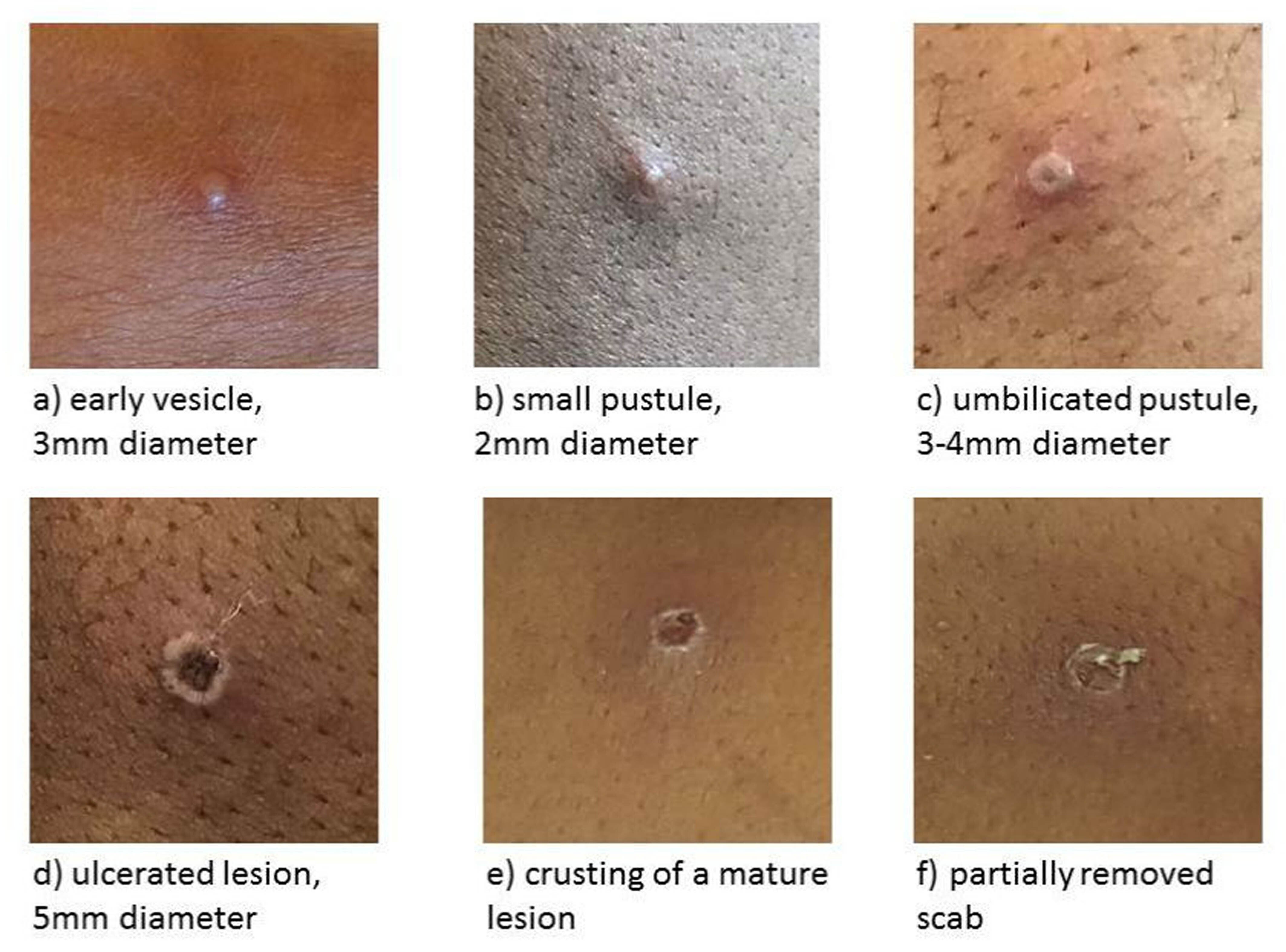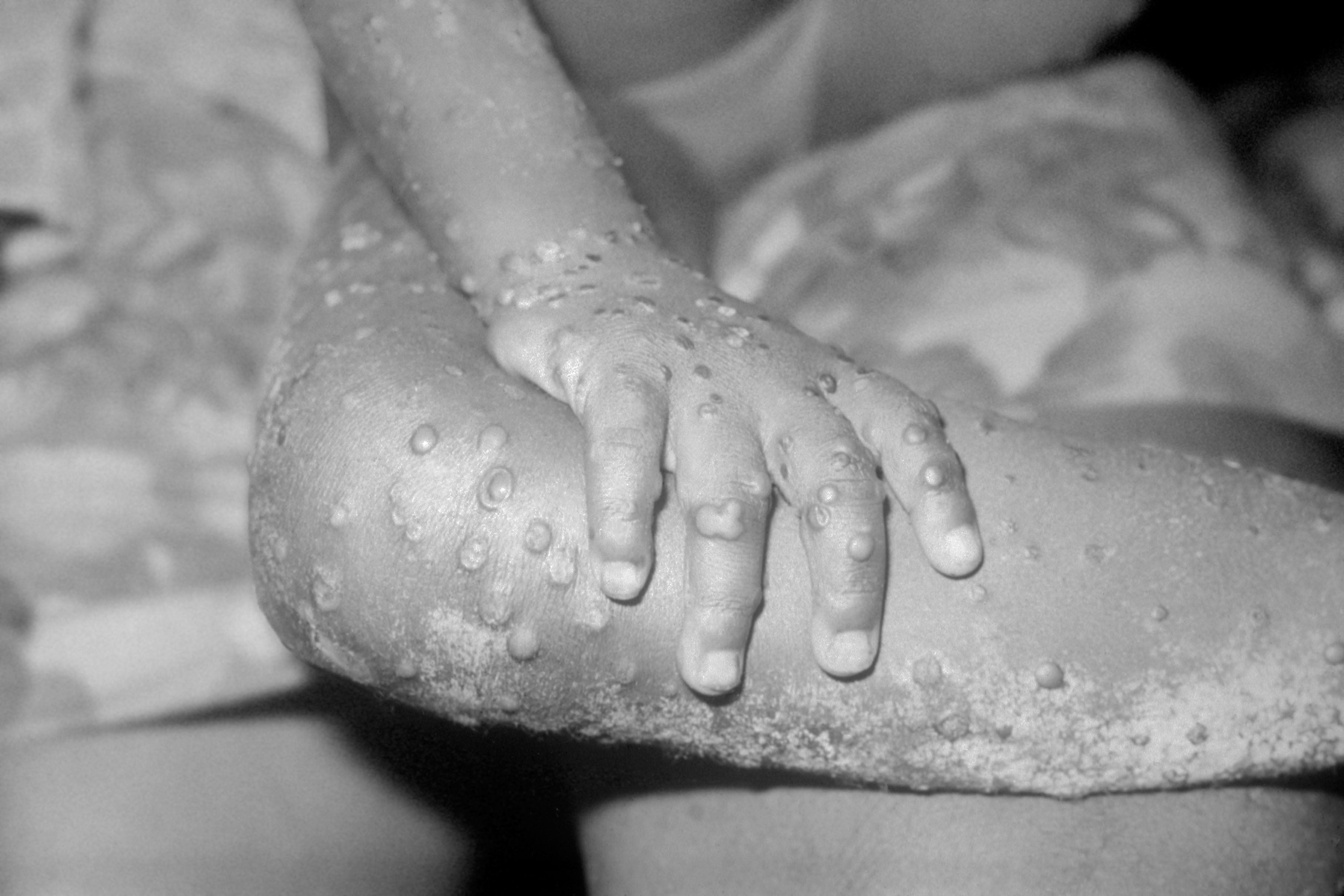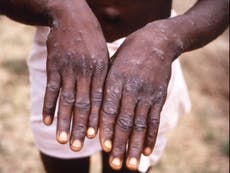All you need to know about monkeypox after global emergency declared
The most likely route of transmission is close physical contact
Your support helps us to tell the story
From reproductive rights to climate change to Big Tech, The Independent is on the ground when the story is developing. Whether it's investigating the financials of Elon Musk's pro-Trump PAC or producing our latest documentary, 'The A Word', which shines a light on the American women fighting for reproductive rights, we know how important it is to parse out the facts from the messaging.
At such a critical moment in US history, we need reporters on the ground. Your donation allows us to keep sending journalists to speak to both sides of the story.
The Independent is trusted by Americans across the entire political spectrum. And unlike many other quality news outlets, we choose not to lock Americans out of our reporting and analysis with paywalls. We believe quality journalism should be available to everyone, paid for by those who can afford it.
Your support makes all the difference.The World Health Organisation has declared that the monkeypox outbreak in more than 95 countries is a global emergency.
Here is everything you need to know.
What is monkeypox?
Monkeypox is related to smallpox and cases are usually found in West and Central Africa, with the virus not often spreading elsewhere.
That is why outbreaks reported in multiple countries, including the UK and across Europe, caused alarm among public health experts.
The disease, which was first discovered in monkeys, is usually mild but can cause severe illness in some cases.
What are the symptoms?
Most monkeypox patients experience only fever, body aches, chills and fatigue, but some may develop a rash and lesions on the face and hands that can spread to other parts of the body.
The rash can look like chickenpox or syphilis and scabs can form that then fall off.
Most people recover within a few weeks.
The incubation period of monkeypox is usually from six to 13 days, but can range from five to 21 days.

How does monkeypox spread?
The most likely route of monkeypox transmission is close physical contact, touching clothing, bedding or towels used by someone with the monkeypox rash or touching monkeypox skin blisters or scabs.
There is a smaller risk of it being spread through coughs and sneezes and, as prolonged face-to-face contact would be needed, this is not one of the main routes of transmission for the monkeypox virus.
Sexual intercourse is thought to expose people to a higher risk of contracting the disease as, although it is not known to be sexually transmitted, the close physical contact involved means exposure is more likely.
A majority of the cases seen so far have been in gay and bisexual men and men who have sex with men.

What is the level of risk in the UK?
The type of monkeypox involved in the outbreak is a West African variety said to be fatal in only one per cent of cases.
The UKHSA said that, after the WHO declaration of a global emergency, the risk to the UK remains the same.
When did monkeypox arrive in the UK?
The first case connected to the current outbreak was recorded in England on 7 May 2022.
Scotland recorded its first case on 23 May, while Wales and Northern Ireland confirmed cases on 26 May.
How many cases are there in the UK currently?
As of 22 August, there are 3,207 confirmed and 133 highly probable monkeypox cases in the UK or 3,340 in total, according to the UK Health Security Agency (UKHSA).
Of these, 3,191 are in England, with a high proportion of cases believed to be in London.
What is the current public health guidance for monkeypox?
UKHSA guidance for close contacts of a confirmed monkeypox case has been updated to advise that close contacts do not need to isolate at home if they do not have symptoms.
Close contacts are advised to call NHS 111 or a sexual health clinic if they develop a fever or any monkeypox symptoms and to avoid skin-to-skin contact with others, avoid international travel if possible and to let health or dental facility staff know they are a close contact before attending appointments.
Because it can take up to three weeks for symptoms to appear after being in contact with someone with monkeypox, people are advised to stay alert for symptoms after having skin-to-skin or sexual contact with someone new.
Why has the WHO declared a global emergency?
As of 23 August, there are now more than 41,664 reported cases from approximately 96 countries and territories and 12 deaths, according to the WHO’s latest data.
The body’s director-general Tedros Adhanom Ghebreyesus has acknowledged that the committee was unable to reach a consensus on whether the outbreak represents a public health emergency of international concern.
But he said this is an outbreak “that has spread around the world rapidly, through new modes of transmission, about which we understand too little, and which meets the criteria in the International Health Regulations” and he had therefore decided that it should be declared a global emergency.



